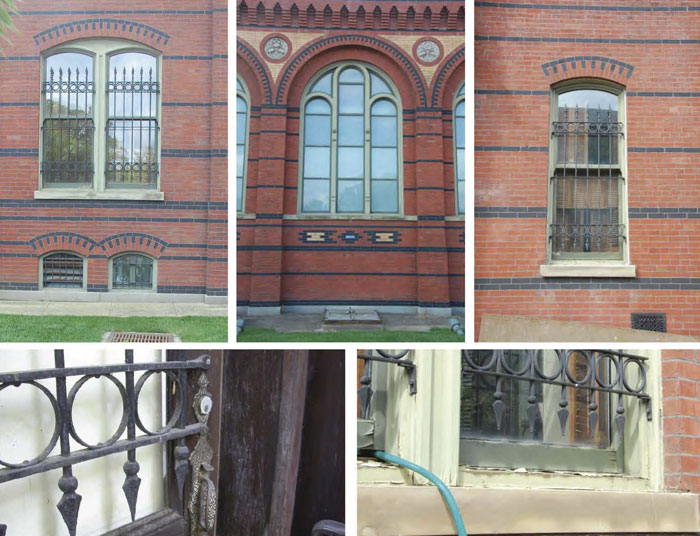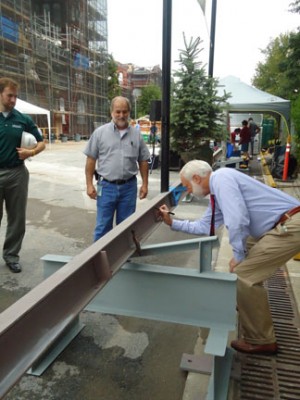What’s up at A&I?
Architect Daniel Burnham is credited with saying, “Make no little plans. They have no magic to stir men’s blood.” The Smithsonian’s Arts and Industries building opened in 1881 with big plans as the first U.S. National Museum and for more than a century, A&I “stirred men’s blood” with exciting exhibitions and special events. The historic building has been closed since 2004 and one my goals as Secretary is to see the building reopened. Burnham would expect no less of me, especially since every day I am privileged to sit at his very own architect’s desk.
The Smithsonian is buzzing with construction and new projects: the renovation of Cooper-Hewitt, National Design Museum in New York City; the new Smithsonian-Mason School of Conservation buildings at the Conservation Biology Institute campus in Front Royal, Va., the National Museum of African American History and Culture here on the National Mall; and the new Tropical Research Institute in Gamboa, Panama. But the renovation of the A&I building is particularly exciting to me, since I can watch (and hear) it unfold daily from my office. Many others are enthralled, too, as I cannot tell you how many times I have been asked, “What’s up at A&I?” The answer is much more than cranes and scaffolding.
The A&I building’s long-term plan will not be finalized until the question of its possible use as an American Latino Museum is decided by Congress, and developing a major museum takes years. In the interim, we want A&I to robustly serve our visitors. To meet this goal, Alison McNally and Christopher Lethbridge are leading a team that has been at work for a year to consider how to use the A&I building starting in 2014. They have engaged many people at the Smithsonian, including a group of curators from different museums who came together through the Palmer Leadership Development Program. The team traveled to museums, heard presentations from leaders in the field, and saw demonstrations to help develop ideas for the interim use plan. The plan also includes modifications to the Castle to improve the visitor experience, including a central orientation desk in the Great Hall and ample opportunities for guests to delve into the history of the Smithsonian.
The renovated buildings will allow us to more effectively tell stories through innovative exhibitions that ask big questions: What is the American experience? How does the universe work? How do we maintain a biodiverse planet? What similarities and differences mark cultures throughout the world? These four “Grand Challenges” have helped guide our collections and research internally. In the revitalized A&I building, exhibitions will be explicitly designed to showcase our efforts to visitors. Rotating exhibitions will allow different Smithsonian entities and other partners to share valuable exhibition space on the National Mall.
Active learning tools in these buildings will use technologies like digital mapping and augmented reality to create unforgettable experiences. Interactive touch screens in the Castle will provide interactive directions for families and multiple video screens will entertain and inform them.
Importantly, these revitalized buildings will help us become more self-sufficient as an Institution. Visitors will have new options to shop and eat, including a beautiful café space within the Haupt Garden. And the A&I building’s elegant open spaces will make it an attractive destination for live events.
So how close are we to completion? About 80 percent of the structural upgrades are finished. The older wood windows in the A&I building have all been removed and will be replaced with new custom windows that will provide superior insulation and make the building more secure. The entire roof has been removed and new steel framing needed to make the building compliant for snow, wind and seismic load requirements is nearly complete. The new slate roofs on the towers at the four entrances to the building have been finished. All of these renovations carefully replicate the original 1881 appearance of the building, while reflecting the principles of sustainability that drive all of our construction projects at the Smithsonian.
Throughout much of its history, the Arts and Industries building was dedicated to the march of scientific and technological progress. This is embodied in the sculpture “Columbia Protecting Science and Industry,” perched over the building’s north side until its temporary removal for cleaning in February 2012, and it was evident in the rockets and missiles lined along A&I’s west side before the National Air and Space Museum opened in 1976. We will partner to create a program celebrating American innovation in the building which will honor this legacy. Innovation lies at the heart of everything that we do, not just in science but in art, culture and history. The big plans at the Castle and the A&I building celebrate our commitment to progress and reflect the big 21st century expectations of our visitors. When they walk through these newly improved spaces, we want visitors to know that the Smithsonian is “Seriously Amazing.”
Posted: 29 November 2012
- Categories:






